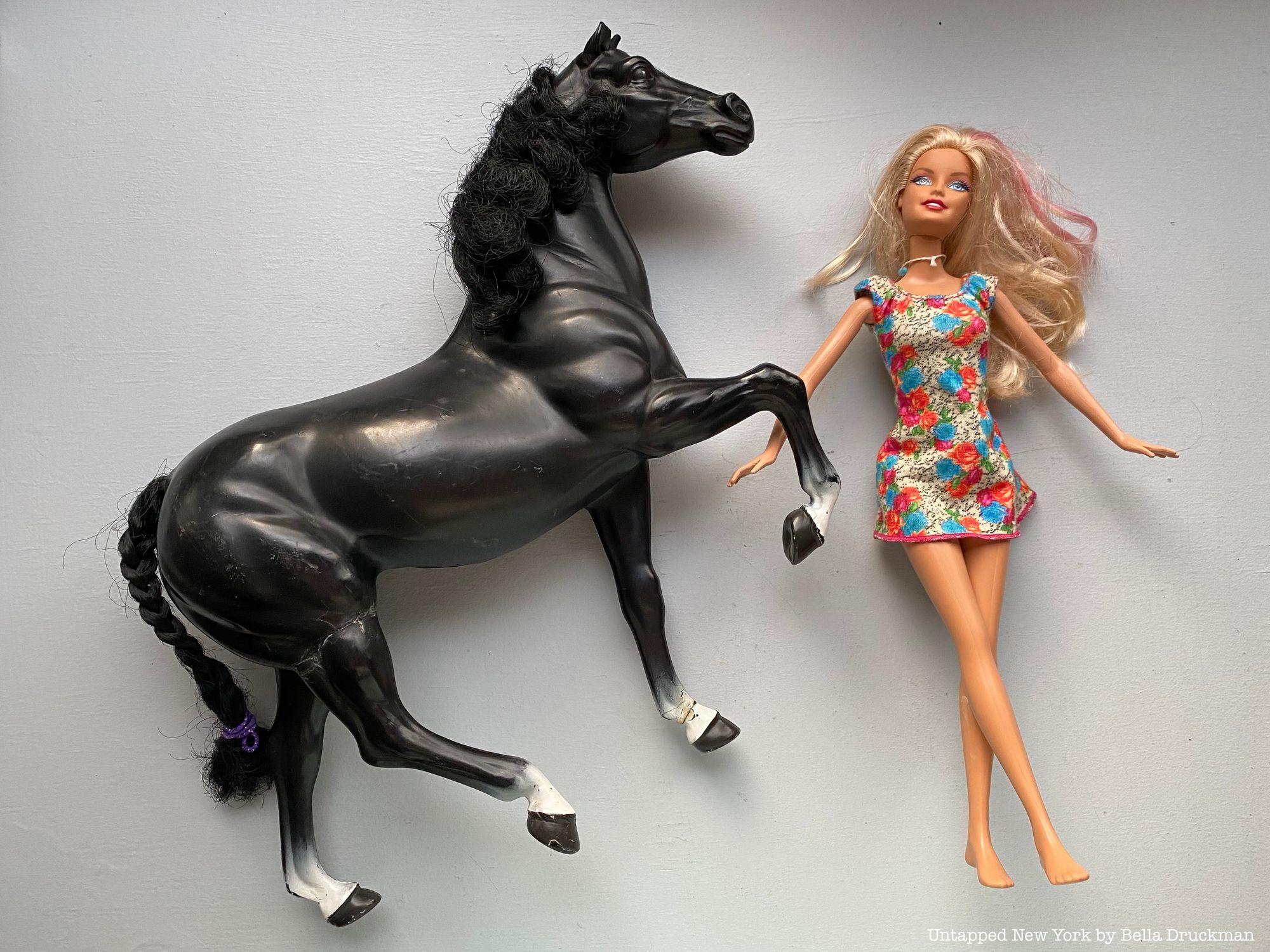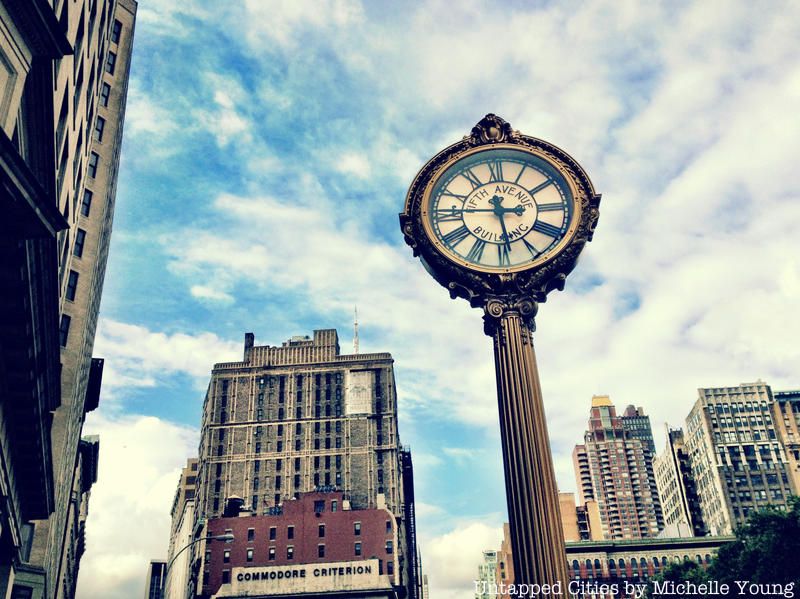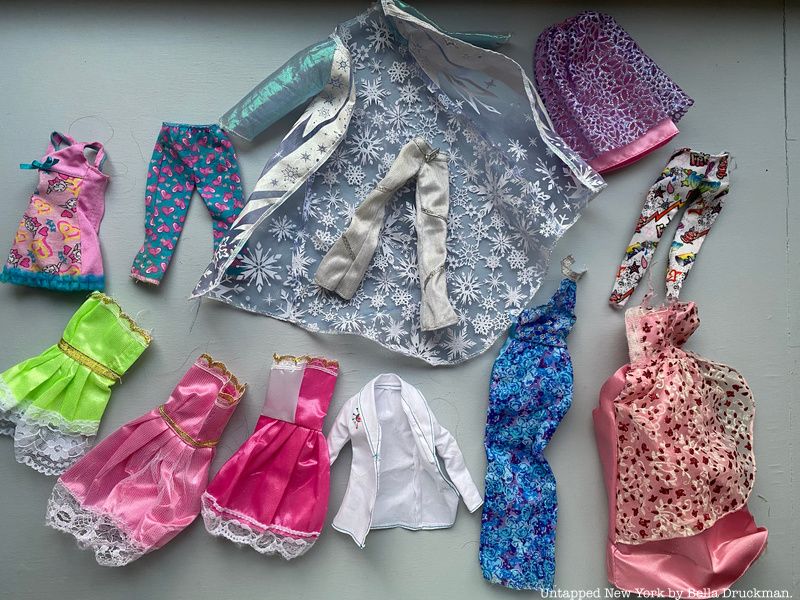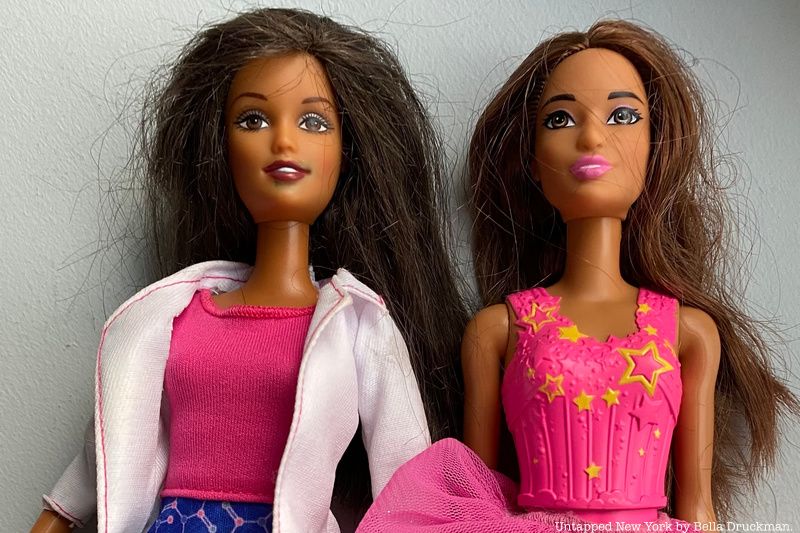Last Chance to Catch NYC's Holiday Notalgia Train
We met the voices of the NYC subway on our nostalgia ride this weekend!


The Barbie Doll has undergone massive character changes since Mattel Inc released her at the North American International Toy Fair in New York City on March 9, 1959—a date that is now connected with the annual International Women’s Day. Barbie was initially perceived as a toy with little success in her future due to her mature features, especially compared to the popular baby and toddler dolls of the time. However, Mattel Inc. pressed on. Now, more than 60 years later, Barbie’s influence is still felt in New York City and beyond. This weekend, to mark the opening of Barbie: A Cultural Icon Exhibition at the Museum of Arts and Design and Barbie's 65th anniversary, the Museum's home on Columbus Circle will be temporarily co-named Barbie Circle on October 19th!
Modeled off of the German Bild Lilli doll, a doll based on the cartoon character Bild Lilli (who was a female escort), Barbie had a sexual demeanor. Nevertheless, little girls embraced this grownup doll dressed in a swimsuit with long, flowing hair. Mattel Inc. sold 300,000 of the $3 dolls in their first year of production, filling the toy market with the first mass-produced doll with adult features.
Barbie was first unveiled in the now-famous black and white striped bathing suit and a pair of white cat-eye sunglasses. Her face sported a side-eyed glance, a bold red lip, and blue eye shadow. Her nails were polished in a bright red and gold hoops adorned her ears.

Ruth Handler, the woman inspired to create Barbie, was born in Denver, Colorado, but spent most of her life in Los Angeles, California. She found inspiration to create Barbie from her daughter who played with paper adult dolls in lieu of her baby and toddler dolls. Handler and her company decided that New York City was where Barbie would find the most success.

The North American International Toy Fair, which now calls itself Toy Fair, held its debut fair in February of 1903. As the toy fair grew, it switched locations to 200 Fifth Avenue in 1910, which became known as the Toy Center. Initially an office building in 1909, architects Maynicke & Franke built this building until it stood at 16 stories in the growing city of New York. In 1839, a farmhouse stood in what would become the center for toys. The building was the Fifth Avenue Hotel until it became the home of the North American International Toy Fair, trading guests paying up to $2.50 a night for the newest toys of the year.
This Toy Center continued to grow, so Harry B. Hemsley, a man active in the 200 Fifth Avenue Associates group, bought another building located at 1107 Broadway Avenue. He connected the two locations with a sky bridge in 1967. Since then, toy trains, dolls, and games have found a space to build their popularity in the toy industry. The Toy Center, bought in 2007 by L&L Holding Co., is now an office building, and sadly, the sky bridge was demolished much like the nearby Met Life building sky bridge.
Now, Toy Fair occurs in the Javits Center, a building opened in 1986 as the Marketplace of the World. 7,000 toys introduce themselves to New York at the Toy Fair. Like Barbie in 1959, some toys initially seen as destined for failure, find success. Now, according to Barbie’s website, “More than 100 dolls are sold every minute, with a total of 58 million sold annually.” One of the most popular dolls on the market, Barbie has amassed more than 1.8 million followers on Instagram, giving her more followers than American Girl Brand and the LOL Surprise Dolls combined.
Barbie was named after Handler’s daughter Barbara and stands at 11.5 inches tall. She gained popularity due to her appearance in commercials, which sang “Barbie you’re beautiful. You make me feel my Barbie doll is really real.” These commercials premiered during the Mickey Mouse Club TV show in 1959 following her debut at the Toy Fair.
As Barbie joined households across the United States, Mattel Inc. found that it was time for her to find a partner. This partner was named Ken after Handler’s son Kenneth. Since 1961, this pair has extended their influence past New York, even appearing in Toy Story 3. The producers of Toy Story wanted Barbie to be Woody’s girlfriend in the premiere Toy Story movie, but Mattel Inc. did not give them the right to put her in the movie.
Nevertheless, Barbie has been an inspiration for girls since she expanded past her striped bikini look. As of now, Barbie has had over 200 careers, including CEO, journalist, surgeon, and astronaut. Miss Astronaut Barbie Doll was released in 1965, four years before Neil Armstrong stepped on the moon.

Barbie eventually strove to become more diverse. The first Black and Hispanic dolls named Barbie premiered in 1980. Before this, the dolls of color had only been Barbie’s friends. This included Christie, one of the first Black dolls to be friends with Barbie. Christie was a champion of Equal Rights.

After complaints that Barbie’s body type was exclusive, Mattel Inc. introduced Barbie with new body types in 2016. She appeared on the cover of Time magazine along with the words, “‘Now can we stop talking about my body?’” Customers can now buy Barbie in her original state, along with petite, curvy, and tall forms. 2018 brought the #MoreRoleModels Barbies, which belong to the Inspiring Woman Series. Some of these dolls included Maya Angelou and Rosa Parks.
With the arrival of the annual International Women’s Day, a new Barbie was released on March 10, 2021. This new doll, modeled after Eleanor Roosevelt was part of the Inspiring Woman Series. The series honors heroines throughout time.
Eleanor Roosevelt, a New York native, was born at 56 West 37th Street, where she grew up until her parents passed away. She then moved to Tivoli, New York where her Grandmother lived. Very active in New York, Roosevelt was a volunteer teacher for impoverished immigrant children at Manhattan’s Rivington Street Settlement House. She is commemorated in the Eleanor Roosevelt Monument in Riverside Park and a memorial in the United Nations Sculpture Garden. Barbie honors the inspiring work of Eleanor Roosevelt, paying homage to her New York roots.
Next, check out 11 Things Invented in NYC
Subscribe to our newsletter